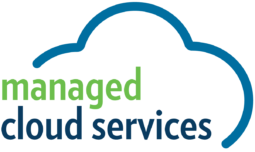Managed Cloud Services

Let us manage your cloud experience
so you can focus on the business of banking
Productivity
Focus on achieving more important business and security goals by removing time-consuming IT management chores
Security
Rely on a team of IT experts and an extensive set of policies and controls that go beyond what you can achieve in-house
Scalability
Achieve greater agility with on-demand resources that allow your infrastructure to grow with your business strategy
Improved DR
Reduce DR costs while increasing the manageability and speed of application and data recovery during a disaster or outage
Ideal for Community Banks and Credit Unions Who:
- Are expanding service offerings and opening new locations
- Are struggling to manage and support in-house servers and applications
- Don’t have a good way to test or manage a Disaster Recovery site
- Are tackling outdated or problematic servers and hardware
- Are not sure how to build the right cloud strategy

In a prior life, it took years, and a lot of pain and sweat to migrate to the Cloud. With Safe Systems we’ve accelerated our Cloud journey in just months.
Greg Judy
Director of IT, South Georgia Banking Company

Frequently Asked Questions
Managed Cloud Services FAQ
The Cloud is not a physical entity, but instead is a vast network of remote servers which are interconnected and meant to operate as a single ecosystem. These servers are designed to either store and manage data, run applications, or deliver content or services. Instead of accessing files and data from a local or personal computer, you are accessing them online from any Internet-capable device.
Yes, while Microsoft provides high level of redundancy to ensure your server is always there and available, there is still a need for file level backups. To ensure an employee doesn’t accidently or purposefully delete a file or folder, file level backups are needed. Microsoft offers an integrated solution with their cloud solution to handle this need. It is a separate feature and add-on but is really a must have for most financial institution servers.
If you’re not using the Cloud today, you primarily use your internet connection for email and web navigation. The Cloud shifts the bandwidth focus to connections between the network and the cloud infrastructure. While email can put a significant burden on internet connections, it pales in comparison to when you move data storage to the Cloud, replace business-critical applications with SaaS, or tap into a hosted database in the Cloud. When you increase the use of cloud-based solutions, you need to ensure you evaluate your existing bandwidth and increase it where appropriate to support the added demands on your internet.
With the Cloud, you have the flexibility to size up, or size down your IT infrastructure whenever you need, and you have the agility to change direction quickly—whether it’s changing server functions or deploying new solutions. There are no huge upfront costs like hardware and your operating expenses transition from CAPEX to OPEX with consumption-based pricing. The Cloud is built for growth, especially rapid growth, so it is ideal for de Novos or those community banks or credit unions in merger and acquisition mode. Plus, the speed of cloud-based disaster recovery is remarkable. We routinely see full recoveries in just minutes compared to what used to take hours, sometimes days.
Adding cloud-based components allows for faster and easier testing of new servers and functionality. It also eliminates a lot of hardware headaches. With less or no hardware, there is less maintenance and no need for tracking and purchasing of hardware warranties. Those hardware refreshes that you have to plan for, purchase, and typically hire a third party to complete are gone! And, those dreaded hardware failures that always seem to happen at the worst possible time become a thing of the past. One of the biggest advantages for your IT team is that your DR process is put into “easy mode.” Your systems can be up and running quickly despite the severity of outages or natural disasters.
Just because you move to the Cloud doesn’t mean you can stop worrying about the maintenance of your IT infrastructure. You need to stay aware of new security features and monitor existing configurations on a regular basis. You also need to think of access to your cloud infrastructure as you would access to your server room— it’s your job to manage who has access. Since the Cloud is consumption-based, it is important to review reports to make sure you don’t get caught off guard by usage. If usage is high or low, you may need to right-size. With Safe Systems, our Managed Cloud Services are designed to provide cloud maintenance and help you stay on top of your cloud infrastructure.
It’s highly compliant, secure, and highly reliable for the banking community. Today, 80% of large financial institutions are already adopting Microsoft Azure. In large part, this is because they have every audit you can imagine, including SOC II Type 2. They also have over 40 certifications and attestations, the most comprehensive set of any cloud service provider. Microsoft practically wrote the book on cloud security, spending over a billion dollars on cybersecurity annually. Their platform includes security features such as 24-hour monitored physical security, centralized monitoring and alerts, penetration testing, DDoS defense, and more.
Ready to get started with Managed Cloud Services?
Move your IT infrastructure, operating systems and more to the Cloud. Whether you are looking for better ways to compete, faster innovation or scalability, our experts can customize the perfect cloud solution for your business needs. And, we’ll ensure your strategy stays on track with reporting, configuration changes, right-sizing and more.

